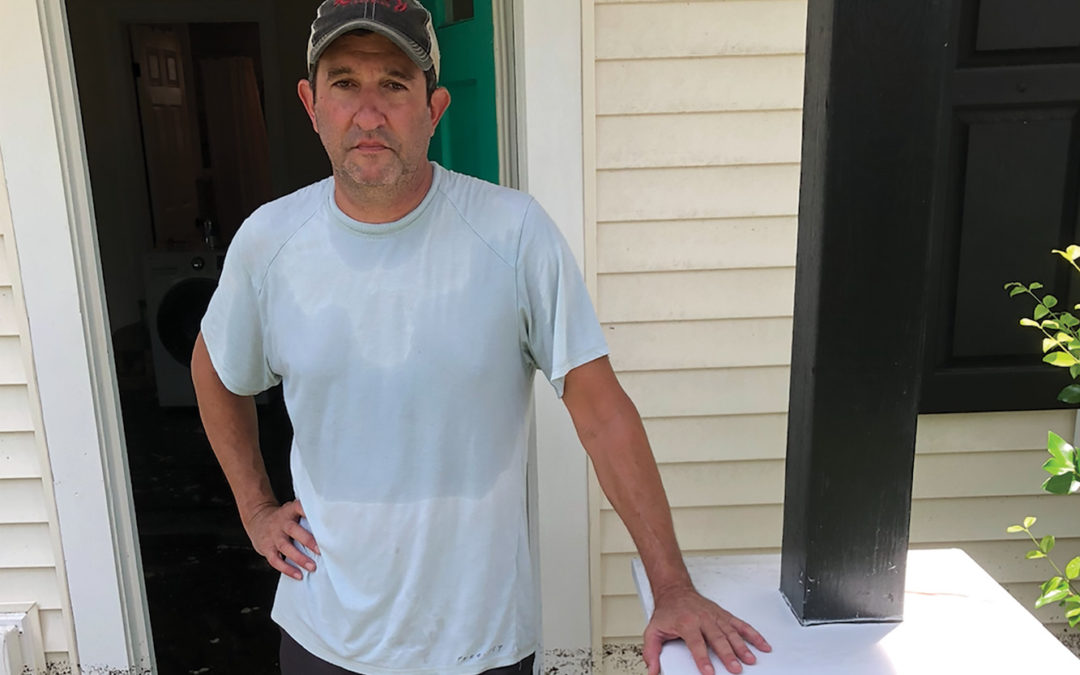Heavy rains put the focus back on flooding issues West of the Ashley
Last month, David Griffin stood in front of his new home on Magnolia Avenue and watched his personal items being removed by workers from a local water damage restoration company.
A rainstorm the night before had dropped at least as much as 8 inches of water on West Ashley, according to WCSC-YV news anchor Bill Sharpe, “and we’ve heard of up to 10 inches” in other unverified counters.
The storm paralyzed the city, shutting down many roads on the peninsula, which is surrounded by water on three sides. But West Ashley got some of the worst of the downfall which slowly dragged across the area, with numerous reports of overwhelmed drainage systems throughout.
Usually, it’s just the neighborhoods in the Church Creek Basin that get flooded in West Ashley downpours. But this time everyone seemed to get wet.
Griffin said his house getting flooded “was kind of comical,” as he is a regional manager for a national company that specializes in municipal stormwater projects, with cities like Aiken and Columbia on its client list. Comical or not, Griffin wasn’t smiling.
His furniture. His flooring. You name it, and it was piling up in the front yard. A line of scum a foot up the outside wall ringed the house. Inside, workers had cut away chunks of soggy sheetrock along the bottom third of the walls in all the rooms.
Griffin had just moved into his house three weeks before, a full week before any flood insurance could kick in. Friends were taking him in and helping cleanup, too.
The surprising thing is, though, that Griffin’s home isn’t in a flood zone. And two blocks down the street is the West Ashley Bikeway, where the city spent $12 million to redo all of its drainage to help alleviate nearby flooding issues.
He’d been told that the house had been flooded between 5 and 6 inches during Hurricane Irma. “We got a foot on this one,” he said.
Griffin thought he’d be safer in West Ashley from the neighborhood he left on James Island, which was much closer to the water.
Scientists say that Charleston is stuck between a shower and a wet place. Sea levels are rising thanks to climate change, and that rainfalls are increasing in intensity. And West Ashley is caught in the middle.
An analysis prepared by the nonprofit Union of Concerned Scientists last year shows how flooding is worsening in the area. Half a century ago, Charleston slogged through four days of tidal flooding annually. Last year, that number was reported to be a record-setting 50 days.
The report stated that within the next 50 years chronic flooding will be an almost weekly occurrence.
Charleston Mayor John Tecklenburg said after the storm that fixing flooding is the city’s “top priority. It’s a public safety issue.”
Public Service Director Laura Cabiness, who oversees stormwater, pointed out that the city has done a lot in the last two years, including spending $60 million on various storm and rainwater drainage.
Dozens of homes in the basin have been bought through a FEMA grant with the city covering 25-percent of the cost.
Additionally, she said, the city is strengthening its relationship with Amsterdam-based water engineers to further bolster the city’s planning and projects. She adds, “But I get it, people get emotional; it is their homes.”
First-year City Councilman Harry Griffin, who represents the flood-prone Shadowmoss area, wants to do even more. “We’ve had enough time to study the problem, now we have to move onto the implementation stage,” he said.
As such, Griffin is very excited about the work City Council is putting into creating what he calls the “toughest development regulations” in the city’s history for the Church Creek Basin.
“We are going to incentivize developers building in areas that have never flooded before,” said Griffin. “They are going to have to jump through a lot of hoops, so we can make sure that anything new that is built will not harm but help.”
Because of the time needed to hammer out and vote on the new regulations, Griffin said the current building moratorium will likely have to be extended for the basin to make sure it gets done correctly.
But is it realistic to hold the city to a standard that no matter the natural event, like a storm surge from a hurricane, nothing floods in the “Lowcountry?”
“Storms are getting stronger, you just need to look at the last few storms to see that, and they seem to always hit at high tide,” said Griffin. “We have to be prepared for that, we have to have expectation that we are going to get hit hard every time. We have to be prepared: we just got hit with up to 10 inches of rain and we had no idea it was coming.”
“The city has to be prepared to handle a “minor natural disaster and then extend those regulations to the rest of the city, like equally flood-prone Johns Island and Cainhoy,” said Griffin.
Hopefully, the work gets done and the David Griffins of the world won’t have as much to worry about.








